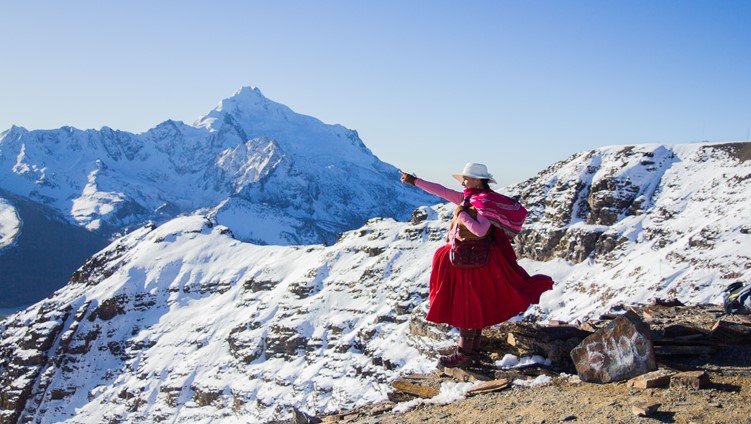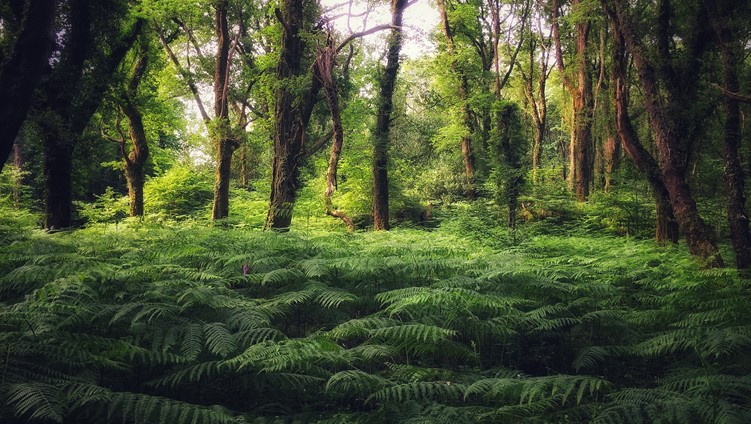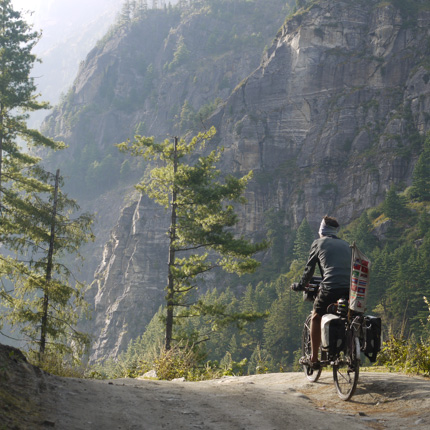
In an account of his experiences in the Indonesian rainforest, director Matt Senior highlights the importance of film in helping conserve the treasures of the natural world as they face ever greater pressure from human activity.
In November 2017, the world was introduced to a new species of orangutan known as the Tapanuli orangutan. They are the first great ape species to be announced since the bonobo almost 100 years ago, and in 2018, I was fortunate enough to direct and produce the world’s first documentary on this new species called ‘Now Or Never’.
There are fewer than 800 of these orangutans living in the world today, making them the rarest great ape species on the planet, and are found in only one forest in Indonesia called Batang Toru, located in the Tapanuli region of North Sumatra.

The other species of orangutan in the world are the Sumatran orangutan and the Bornean orangutan, the latter living on the island of Borneo, separated by the Karimata Strait. Remarkably, however, the Tapanuli orangutan is more closely related to the Bornean orangutan than its Sumatran cousin, which reside on the same island of Sumatra. Ten thousand years ago the islands of Borneo and Sumatra were connected, meaning the Tapanuli and Bornean orangutans were also connected, whilst the Sumatran orangutans to the north were separated by a volcanic lake. However, that is not to say the Tapanuli orangutan is the same as the Bornean orangutan. They have distinct differences that mark them out as a new species, such as frizzier hair, longer protruding beards on the males, and the males also have longer lasting calls.
It’s quite incredible to think that the Tapanuli orangutan has been living in the Batang Toru Forests for tens of thousands of years, yet they have only recently been discovered. One of the reasons they have eluded us for so long is because of the type of forest they live in. Batang Toru is a place like no other; it is a rainforest at altitude and is extremely difficult to access due to its rugged terrain. This means that very little of Batang Toru has actually been explored. The critically endangered Sumatran tiger has already been identified as one of the residents of Batang Toru, but who knows how many other endangered species are living there, some of which will be new to science.
Precious ecosystem
Being the one and only home to the rarest great ape on the planet, Batang Toru is a very precious ecosystem that should be protected. The forest is also immensely important due to the water it creates, enabling countless living things in and around the forest to thrive, including local people. The water is produced through the trees, and one of the reasons trees exist in Batang Toru is because of the orangutans’ role as seed dispersers, making them a crucial animal.
However, 15% of Batang Toru currently remains unprotected, and within this 15% is where the highest density of Tapanuli orangutans is found. Also in this 15% is where some devastating deforestation has been occurring in the last couple of years to make way for a new hydro-electric dam project, due to be completed by 2022.
There are good reasons for hydro-power. It provides energy to many people, and there are more environmentally devastating ways of creating energy that could be worse. However, it has been said that North Sumatra already has a surplus of energy. Furthermore, alternative, less destructive ways of gaining energy in Batang Toru have been identified such as existing geo-thermal plants. It has also been predicted that if this hydro-electric dam is completed, it will not only be the largest in Sumatra, but scientists say that it will push this new orangutan species towards extinction. Therefore, it begs the question: why is it necessary?
As a filmmaker, when I found out about this story in late 2017, I was shocked that a great ape species could be both discovered and could potentially go extinct within our lifetime. I instantly felt that it should be told through a documentary. Film can be very powerful, it can engage people in ways that words on paper simply cannot, and as part of a Masters I was undertaking at the time at the National Film and Television School, I started to develop ‘Now Or Never’.
I contacted the conservation group Sumatran Orangutan Conservation Programme (SOCP), who have a camp deep inside Batang Toru, used for tracking and monitoring Tapanuli orangutans. They were kind enough to allow me to travel to their camp in June 2018 once I had completed pre-production, acquired the necessary filming permits and organised logistics, which was no easy task.

Aerial views of the land cleared as a staging area for the building of a new hydroelectric dam, South Tapanuli, North Sumatra on August 20th, 2018

I will never forget arriving in Tapanuli and getting the warmest welcome at the airport from SOCP, and I will certainly never forget the journey into Batang Toru the following morning. Alongside the SOCP camp manager Sheila, Arrum from SOCP and several local villagers helping to carry the 80kg of filming equipment, we made the 15km/5-hour journey to camp inside Batang Toru.
Sat next to a flowing stream, I was very pleased to be able to call this magical place home for the next few weeks. The only sounds that could be heard were those of pure nature – birds, streams, the movement of trees; not a single car or plane.
That first afternoon Sheila explained to me how lucky I would need to be in those three weeks to find an orangutan, let alone film one, due to how elusive they are. Orangutans build a new nest to sleep in every night, and Sheila also told me that there were other conservationists, Anda and Dosman, in the forest looking for orangutans on that day, and if they were to return before dark, it meant they hadn’t found an orangutan, but if they were to return late… well, it was hopeful.
The day passed and the light started to fade. At around 8pm, we heard a couple of very excited voices racing to camp. It was Anda and Dosman and it turned out they had encountered two orangutans – a mother called Cemara and her seven-year-old son, Cakra. I was ecstatic.
Face to face
The next morning, we woke up at 4am and trekked through the dense vegetation to get to the orangutans’ nest before they awoke. We sat and waited patiently for them to wake up. At around 7am, with the camera and long telephoto lens pointing high up at the nest, I saw a little face poke out and stare down the lens of the camera. I was essentially making eye contact with one of the rarest great apes on the planet. I would have loved to know what he was thinking. It was one of the most incredible moments of my life. It was both mesmerising and tragic at the same time, to think this little innocent face could soon be gone.
Orangutans spend their days moving from tree to tree eating fruit and spreading the seeds, so we followed Cemara and Cakra whilst they did this. At 20 to 30 metres high up in the trees, Cemara did not seem fazed by us one bit, Cakra however, had an abundance of curiosity and often dropped branches towards us, which sometimes landed very close to me and the camera! Other times he came lower down in the tree to examine us, which I have to say was perfect for filming, as one of the biggest challenges was filming an animal that resides so high up. Eventually, after half a day, they ventured into a part of the forest where the elevation became too steep and it was not possible for us to continue with them, and we returned to camp.
The second morning arrived and we had no orangutans to follow, so the plan was simple: to explore the forest and to try to find more. This day was a complete contrast to the first; it was relaxing, walking slowly and resting, rather than chasing the orangutans’ movements. It was late afternoon and we had almost returned to camp. I remember thinking to myself ‘we haven’t seen any today, but that’s fine because there are many more days to come’, and then it happened. Sheila and Ulil, another SOCP conservationist, turned to me and told me to look up. There were two more orangutans; this time Pelangi and her three-year-old baby daughter.
We followed them for an hour before they built their nest for that night, and the following day we woke up early and followed them throughout the forest, this time for an entire day.


We decided not to return to the nest the following day because they had moved out of the conservationists’ tracking area and far from camp. We continued to search for orangutans over the next two weeks, but to no avail. Pelangi and her baby turned out to be the last Tapanuli orangutans we would see in Batang Toru. Though that is not to say we did not have an incredible time in those remaining two weeks.
Some of the remaining days in Batang Toru were spent at camp filming reptiles, insects, birds and timelapses. I remember one day going to the stream next to the camp to take my daily bucket shower and a two-metre-long python was casually swimming in the water beside me. One day was spent trekking to the bottom of a majestic waterfall before hiking to the very top and overlooking the forest. Another day was spent trekking to an enormous cave full of thousands of bats, and the walk was no easy feat, journeying through rivers in torrential rain.
A call to action
The time in Batang Toru was very special, and that is because the natural world is so special. If it continues to be destroyed there will be no more orangutans to follow, no more bat caves to discover, and no more waterfalls to climb.
After the filming in Indonesian these experiences then had to be transferred into a story for the screen, so over the following few months, alongside the most talented team of filmmakers, this was achieved. Everyone who was part of this film, from SOCP to the crew, showed their passion throughout. There were many challenges along the way, but by working collaboratively, we have all produced a project of which we are immensely proud.
There are many factors involved in the conservation of a species. With this species, in my opinion, some of the key factors that can lead to the successful conservation of the Tapanuli orangutan are for NGOs like SOCP to continue the amazing work they do day in day out in protecting the Tapanuli orangutan and the awareness they raise. The local people of Tapanuli used to view these orangutans and the forest as nothing more than a source of food and timber, but through the work of SOCP, they now realise the importance of Batang Toru and the orangutans. SOCP also focuses on educating the children in the region, as they are the ones who will protect the forest in the future.



There are other factors such as getting the Indonesian government to halt the construction of the hydro-electric dam, and I know there are several organisations and individuals worldwide working tirelessly to try and achieve this. As well, these organisations are focusing on the funders of the dam to try and get them to withdraw from the project.
‘Now Or Never’ was made with the sole purpose of raising awareness and sharing with the world the story of the Tapanuli orangutan in the hope of contributing towards saving them. Something that myself and the entire crew became very passionate about. We hope to share the story to the world through multiple international film festivals, and privately to leading figures connected to issues in the story. There have been various versions of the film produced, an English version, a Spanish version, as well as an Indonesian version, to enable the film to stretch across more than one language and culture. Our aim with narration was to attach names to the project who have engaging voices, but also established names. The English version is voiced by Patrick Aryee, who has worked on several series for the BBC, and the Indonesian version is voiced by Cindy Thefannie, an Indonesian influencer with a large reach.
Hopefully, ‘Now Or Never’ can inspire people into caring for Batang Toru and this critically endangered species. I hope all of the efforts of organisations fighting to save them will one day be realised and these orangutans can go on to thrive in Batang Toru. As for now, check the ‘Now Or Never’ website and Instagram page, as well as the fantastic efforts SOCP are doing:


Website
www.nowornever-film.com
Instagram
@noworneverfilm
www.sumatranorangutan.org
Instagram @socp.offical
The Crew on Instagram:
Director: @mattseniorphotography
Narrator (English) @patrick_aryee
Narrator (Indonesian): @cindythefannie
Editor: @mirjamjegorov_film_editor
Sound Designer: @kevlanji
Composer: @adampricecomposer
Marketing Executive: @alexchronopoulos
Adventure Uncovered Film Festival
To submit your adventure film that matters, go here.
Keep exploring









